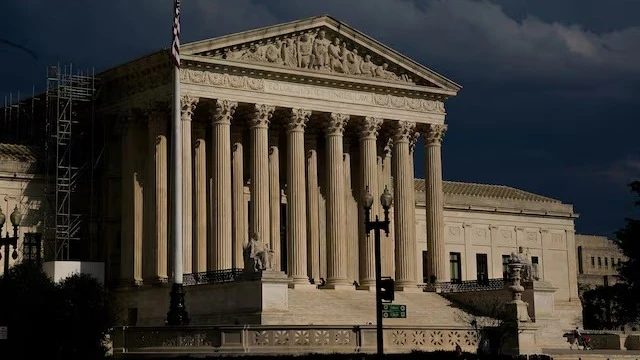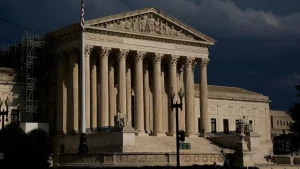In a landmark decision, the US Supreme Court has significantly impacted the authority of federal agencies to create and enforce regulations. This ruling has far-reaching implications for the balance of power between the executive branch and the judiciary, as well as for the regulatory landscape across various industries. This article explores the case in detail,
In a landmark decision, the US Supreme Court has significantly impacted the authority of federal agencies to create and enforce regulations. This ruling has far-reaching implications for the balance of power between the executive branch and the judiciary, as well as for the regulatory landscape across various industries. This article explores the case in detail, analyzing its implications and comparing it to previous rulings affecting agency rulemaking authority.
Background of the Case
In the case at hand, the Supreme Court reviewed the extent of regulatory power exercised by federal agencies. Central to the case was whether agencies could implement rules that have substantial economic and political impacts without explicit Congressional authorization. The case arose from a challenge against a specific agency rule, leading to a broader examination of the scope and limits of agency power.
The Supreme Court’s Ruling
The Supreme Court’s decision was decisive in curbing the regulatory reach of federal agencies. The Court ruled that agencies must adhere strictly to statutory authority granted by Congress when issuing rules. This ruling emphasized that any substantial regulation must have clear and explicit authorization from legislative statutes, rather than being inferred from general powers.
Implications for Federal Agencies
- Reduced Flexibility in Rulemaking: Agencies will now face increased constraints in issuing regulations. The ruling mandates that agencies must have specific statutory authority to create rules, potentially slowing down the rulemaking process and limiting the scope of regulations that can be enacted.
- Increased Judicial Scrutiny: Federal courts are likely to be more involved in reviewing agency rules to ensure compliance with the Supreme Court’s standards. This increased scrutiny may lead to more frequent legal challenges and a higher likelihood of rule invalidation.
- Impact on Regulatory Policy: The ruling could lead to a shift in regulatory policy, as agencies may need to seek more explicit legislative mandates before implementing significant rules. This could affect various sectors, including environmental protection, financial regulation, and public health.
Comparative Analysis of Historical Cases
To understand the significance of the recent ruling, it is useful to compare it with previous Supreme Court decisions that have influenced agency rulemaking authority. The following table provides a comparative analysis:
| Case | Year | Key Issue | Ruling | Impact |
|---|---|---|---|---|
| Chevron U.S.A., Inc. v. NRDC | 1984 | Agency interpretation of statutes | Agencies are given deference in their interpretations if statutes are ambiguous | Established the “Chevron deference” doctrine, favoring agency interpretations |
| United States v. Mead Corp. | 2001 | Applicability of Chevron deference | Chevron deference applies to formal rulemaking, not informal interpretations | Limited the scope of Chevron deference to formal rules |
| King v. Burwell | 2015 | ACA tax credits and IRS regulations | Agencies can interpret statutes under certain conditions | Affirmed agency authority in interpreting complex statutes |
| West Virginia v. EPA | 2022 | EPA’s authority under the Clean Air Act | EPA exceeded its authority by implementing broad regulations without explicit Congressional approval | Restricted agency power in implementing broad, transformative regulations |
Analysis of the Recent Ruling
- Shifting Balance of Power: The Supreme Court’s decision marks a significant shift in the balance of power between Congress and federal agencies. By requiring explicit Congressional authorization for major regulations, the ruling reinforces legislative authority over regulatory actions, potentially leading to a more constrained regulatory environment.
- Legal and Legislative Uncertainty: The ruling introduces a degree of uncertainty into the regulatory process. Agencies may face challenges in determining the extent of their authority, leading to delays in implementing new regulations and potentially stifling innovation and policy advancements.
- Impact on Stakeholders: The ruling affects a broad range of stakeholders, including businesses, environmental groups, and public health advocates. Businesses may face more regulatory hurdles, while advocacy groups might find it more challenging to push for new regulations without clear legislative backing.
Analysis Table
| Aspect | Description |
|---|---|
| Ruling Impact | Requires explicit Congressional authorization for significant regulations |
| Agency Flexibility | Reduced; more constrained in issuing broad rules |
| Judicial Involvement | Increased; more frequent review of agency rules |
| Regulatory Policy Shift | Potentially slower and more deliberate rulemaking process |
Potential Legislative Responses
In response to the Supreme Court’s ruling, there may be significant legislative activity aimed at addressing the new constraints on agency rulemaking authority. Congress might seek to pass new laws that explicitly grant agencies the power to regulate in specific areas, thereby circumventing some of the limitations imposed by the Court. Legislators may introduce bills designed to clarify the scope of agency authority, ensuring that agencies can continue to address critical issues without facing undue delays. Additionally, there could be debates over whether new legislative frameworks or adjustments to existing laws are necessary to balance the need for effective regulation with the Court’s emphasis on explicit statutory authority.
Long-Term Implications for Administrative Law
The long-term implications of the Supreme Court’s decision could be profound for the field of administrative law. The ruling could lead to a more rigorous and detailed legislative process, as Congress may need to be more precise in delegating authority to federal agencies. This shift could impact how regulations are crafted and implemented, potentially leading to a more transparent and accountable regulatory process. Additionally, the ruling might inspire future legal challenges and scholarly debate about the balance of power between different branches of government. As agencies adapt to these new constraints, they may need to develop new strategies for engaging with Congress and ensuring that their regulatory actions align with legislative intent while effectively addressing contemporary issues.
Comparative Table
| Case | Year | Ruling Summary | Comparative Impact |
|---|---|---|---|
| Chevron U.S.A., Inc. v. NRDC | 1984 | Agencies have deference in interpreting ambiguous statutes | Established broad agency interpretation powers |
| United States v. Mead Corp. | 2001 | Chevron deference applies to formal rulemaking only | Narrowed scope of Chevron deference |
| King v. Burwell | 2015 | Agencies can interpret statutes under certain conditions | Affirmed authority in complex statutory interpretation |
| West Virginia v. EPA | 2022 | EPA exceeded authority without clear Congressional authorization | Restricted broad regulatory actions by agencies |
| Recent Supreme Court Ruling | 2024 | Requires clear Congressional authorization for major regulations | Reinforces legislative control over significant regulations |
This analysis provides a comprehensive overview of the recent Supreme Court ruling’s impact on federal agency rulemaking authority and contextualizes it within the broader legal landscape.
Conclusion
The Supreme Court’s decision to limit the rulemaking authority of federal agencies represents a crucial development in administrative law. By reinforcing the need for explicit Congressional authorization, the ruling reshapes the regulatory landscape and underscores the importance of legislative oversight in federal rulemaking. As agencies navigate these new constraints, stakeholders across various sectors will need to adapt to the evolving regulatory environment. This decision not only impacts the current administration but also sets a precedent for future cases involving the scope of agency power and legislative authority.

















